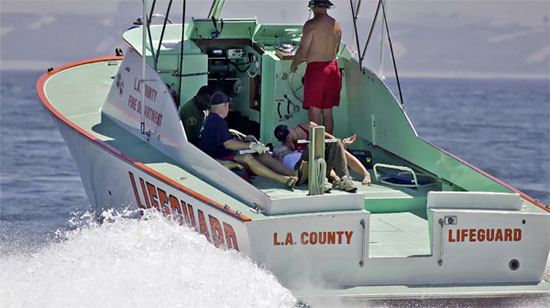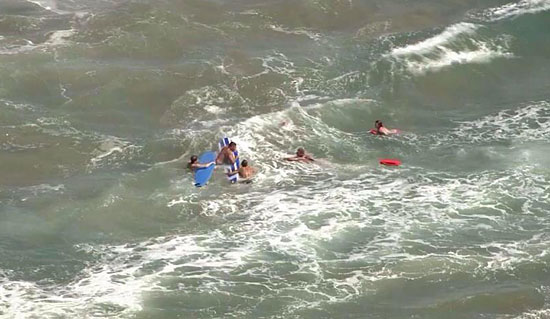Trouble at sea
September 18, 2014
A punishing heat wave sent thousands of people fleeing to the beach this week, but many who tried to cool off in the ocean found themselves in hot water instead.
The Los Angeles County Fire Department’s Lifeguard Division saved more than 1,000 swimmers and surfers swept up by rip currents and other hazards over a five-day period when temperatures peaked at 107 degrees in the San Fernando Valley.
This brought the lifeguards’ total number of rescues up to about 12,000 since January. That’s their third highest tally ever in a single year — with three months still remaining in 2014.
Acting Chief Lifeguard Steve Moseley attributes the spike to a rare confluence of factors: A surge in beach attendance driven by extended periods of unseasonably hot weather, more frequent occurrences of high surf and a warmer ocean.
“All of these contributing factors have combined to create one of the busiest years in recent memory for the Lifeguard Division,” Moseley said.
To date, beach attendance has hit 61 million — well past the 20-year average of 54 million and on pace to exceed last year’s 71 million.
“It’s been so hot inland that everybody’s coming to the beach, even on a Tuesday or a Wednesday,” said Ocean Lifeguard Specialist A.J. Lester. “And because ocean temperatures are warmer, everybody’s staying in the water all day long.” (Tips on staying safe on the beach are here.)
Jet Propulsion Laboratory climatologist and oceanographer Bill Patzert said swimmers and surfers have been particularly vulnerable to being swept away by rip currents, and falling into deep grooves on the ocean floor.
He explained several hurricanes and tropical storms spawned by El Nino conditions in the equatorial Pacific scored the ocean floor, leaving uneven contours.
“The county’s south-facing beaches have been hit with big waves, almost week after week,” Patzert said. “Hurricane Norbert is breaking up, but we have yet another one forming now.
“Because these tend to change the configuration of the ocean bottom,” he added, “people very easily can get into water over their heads in these rip currents.”
Lester said the county employs 200 full-time and 700 part-time lifeguards and has “needed every one of them.” He himself rescued 18 people in a single day last spring, including a pair of boogie-boarding teenagers swept away by rip currents.
“The sister was screaming blood-curdling screams because her brother had fallen off his board and, basically, he was drowning,” Lester said. “I wrapped them around my rescue can but a wave slammed us down to the bottom, and when we got back to the surface, we were all spitting up water.”
Moments after he brought the siblings ashore, he had to dive back in for yet another double rescue. “Then I returned to my tower and parked my truck, but before I could even dry off, we had to pull more people out,” Lester said.
“It’s gotten to the point sometimes when we’re going from one rescue to the next,” Lester said. Still, he added, “There’s nothing more rewarding than completing a rescue, coming back to the beach, and watching those kids run back to their parents, and they’re all hugging each other, and thanking us.”
Section Chief Chris Linkletter said lifeguards also have racked up 1 million “preventions.”
“This means we have prevented that number of people from either becoming rescues or getting into a hazardous situation,” she said.
Amid all the rescues, however, there also have been mishaps.
On Monday, a lifeguard driving a pickup truck back to his tower accidentally ran over a sunbather, who survived but sustained fractures and lacerations to her internal organs.
It was the second such accident this year. In May, another sunbather was hit by a county beach maintenance vehicle.
Posted 9/18/14














 405 bridge work causes a stink
405 bridge work causes a stink
